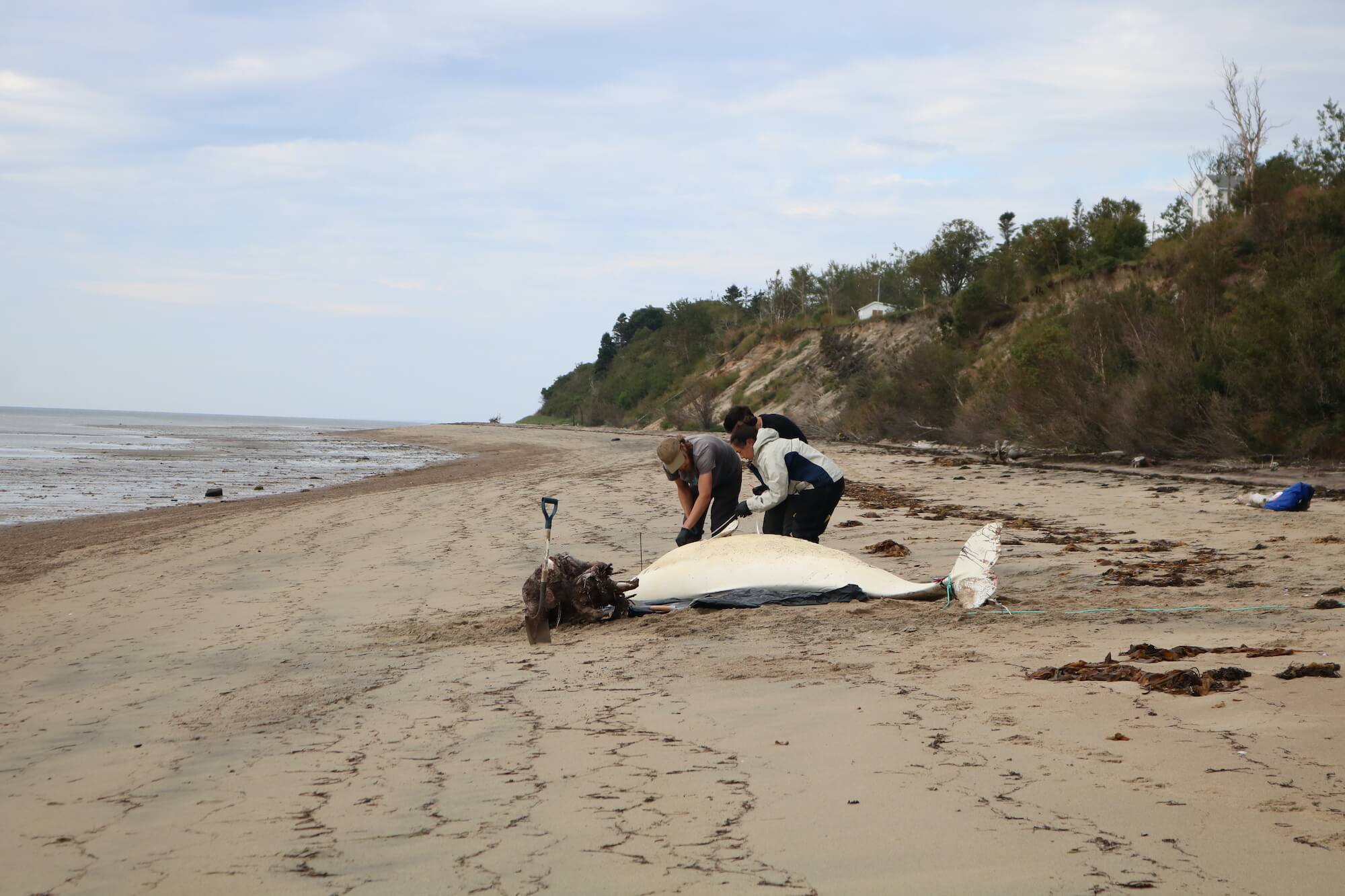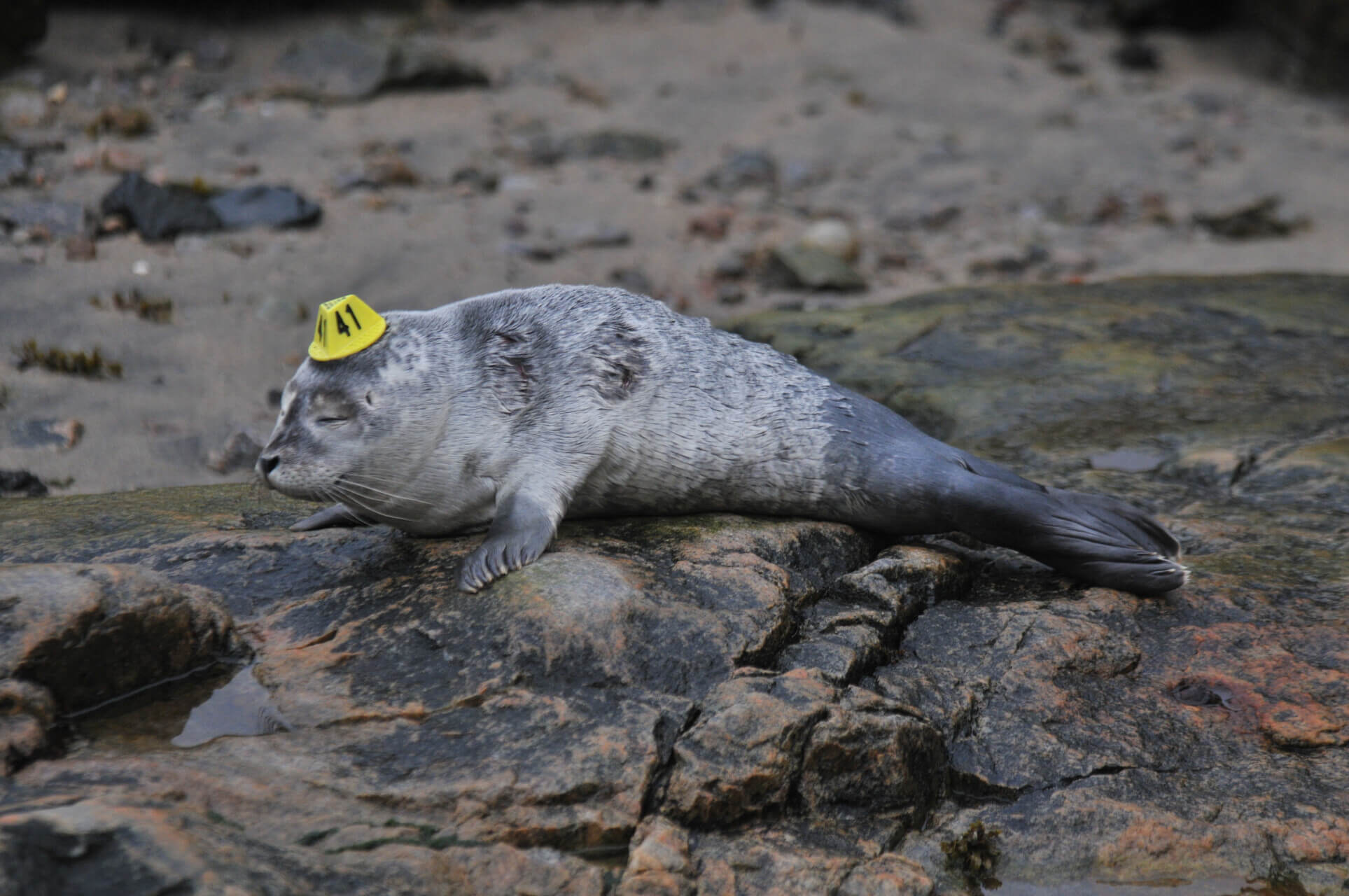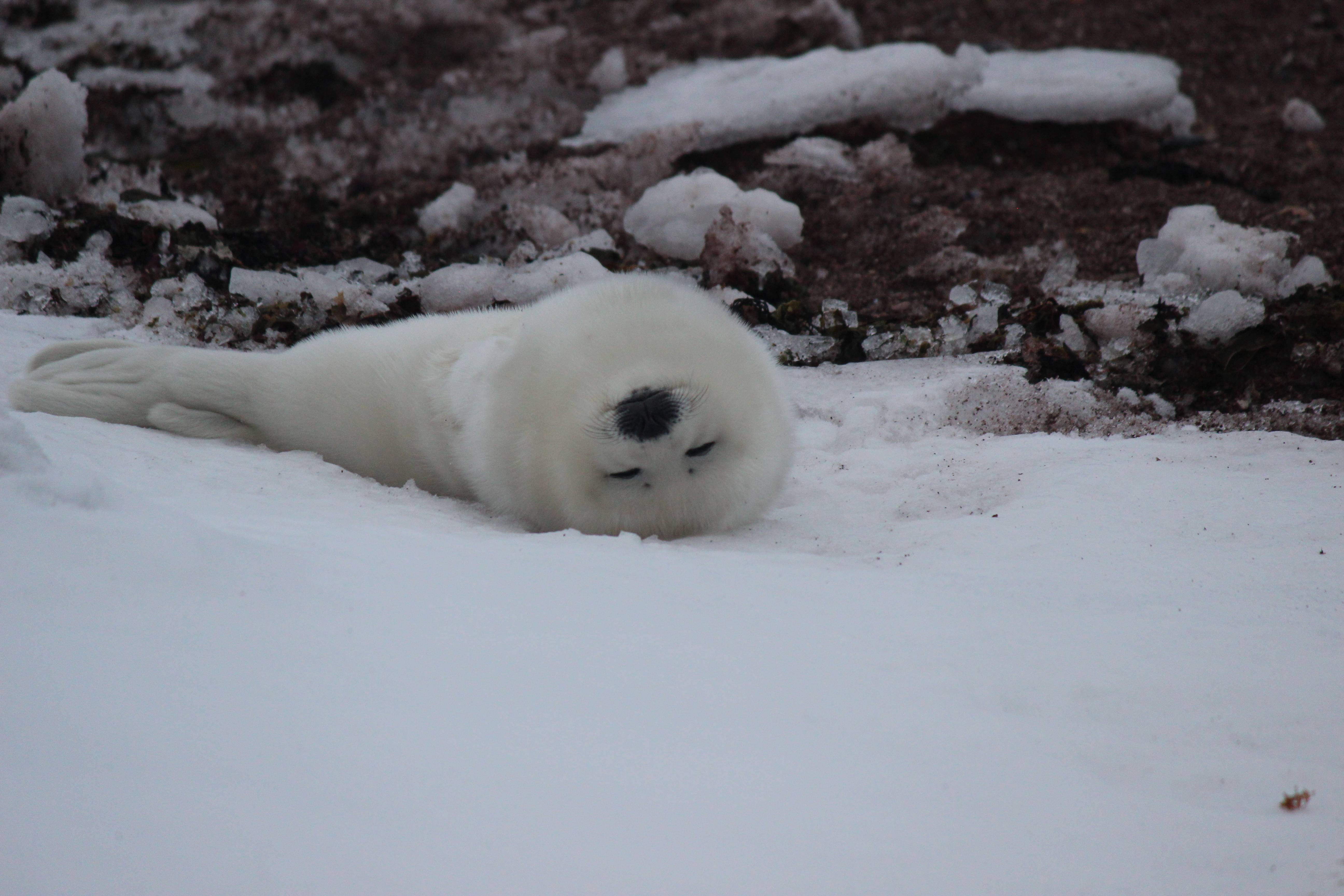July 29, 2018, 2:40 p.m.: the phone rings, breaking the silence at the Marine Mammal Emergencies call centre. Two recreational boaters report a beluga carcass stranded in the cove of the Saguenay Fjord known as Anse aux Petites Îles. The tide is rising, as is the motivation of the witnesses. According to the photos they send, the carcass appears extremely fresh and the individuals who found the carcass make no bones about getting their feet wet in order to secure the carcass. Wardens from the Saguenay-St. Lawrence Marine Park quickly begin searching for the carcass.
Once again, dedicated witnesses would help marine park wardens locate and reach the carcass. The latter was then sent to the Marine Park boat launch in Baie-Sainte-Catherine, where it was picked up on the morning of July 30 by the St. Lawrence National Institute of Ecotoxicology (SLNIE), with the collaboration of Tadoussac residents.
Markings that speak volumes
Network volunteers and GREMM research assistants travelled to Baie-Sainte-Catherine to secure the carcass and ensure that data were collected before sending the carcass to the Université de Montréal’s Faculty of Veterinary Medicine (in French), where it would undergo a necropsy. A mark on the beluga’s right flank and its deeply contoured dorsal crest draws their attention. A shiver runs down their spine, as they realize they will surely be able to identify this beluga. Back in the lab, the animal’s ID is confirmed.
It was with heavy hearts that research assistants working for the Group for Research and Education on Marine Mammals (GREMM) and the organization’s scientific director, Robert Michaud, match this carcass to an individual featured in our catalogues: DL0030, a.k.a. Athéna. This female beluga – whom GREMM knew well – had been seen two days earlier by the Baie Sainte-Marguerite tower crew. First seen in 1989 and then every summer since except for 1990, Athéna regularly frequented the mouth of the Saguenay Fjord, where she swam with communities of females and young belugas. Already white when she was first encountered by GREMM research teams, it is estimated that Athéna would have been born around 1975 or maybe even earlier, as it is well known that belugas turn completely white between the ages of 12 and 16.
According to preliminary results of the veterinary teams of the Université de Montréal, no cause of death could be determined at the time of analysis. More in-depth studies will help us determine how old this beluga is and whether or not she ever gave birth to any calves. Indeed, despite hundreds of encounters with her, the life of Athéna still holds many mysteries. It is therefore important to wait for the complete results before drawing any conclusions on this case.
While Athéna was on her way to the Faculty of Veterinary Medicine, the Network received a second report for a beluga calf carcass near the docks of Rivière-Ouelle in the Bas-Saint-Laurent region. The witnesses, who were well aware of the protocol, brought the carcass over the tide line while waiting for a Network volunteer to arrive at the scene to document the situation and secure the carcass. Unfortunately, the beluga was in an advanced stage of decomposition and was therefore not a candidate for necropsy. However, samples (skin, fat, muscle and liver) were recovered by SLNIE on Tuesday morning. The environmental emergency service Urgence-Environnement (website in French), which is responsible for recovering harmful carcasses, has been notified and is expected to pick up the animal shortly.
These two new cases bring to 9 the number of beluga carcasses found this year.







